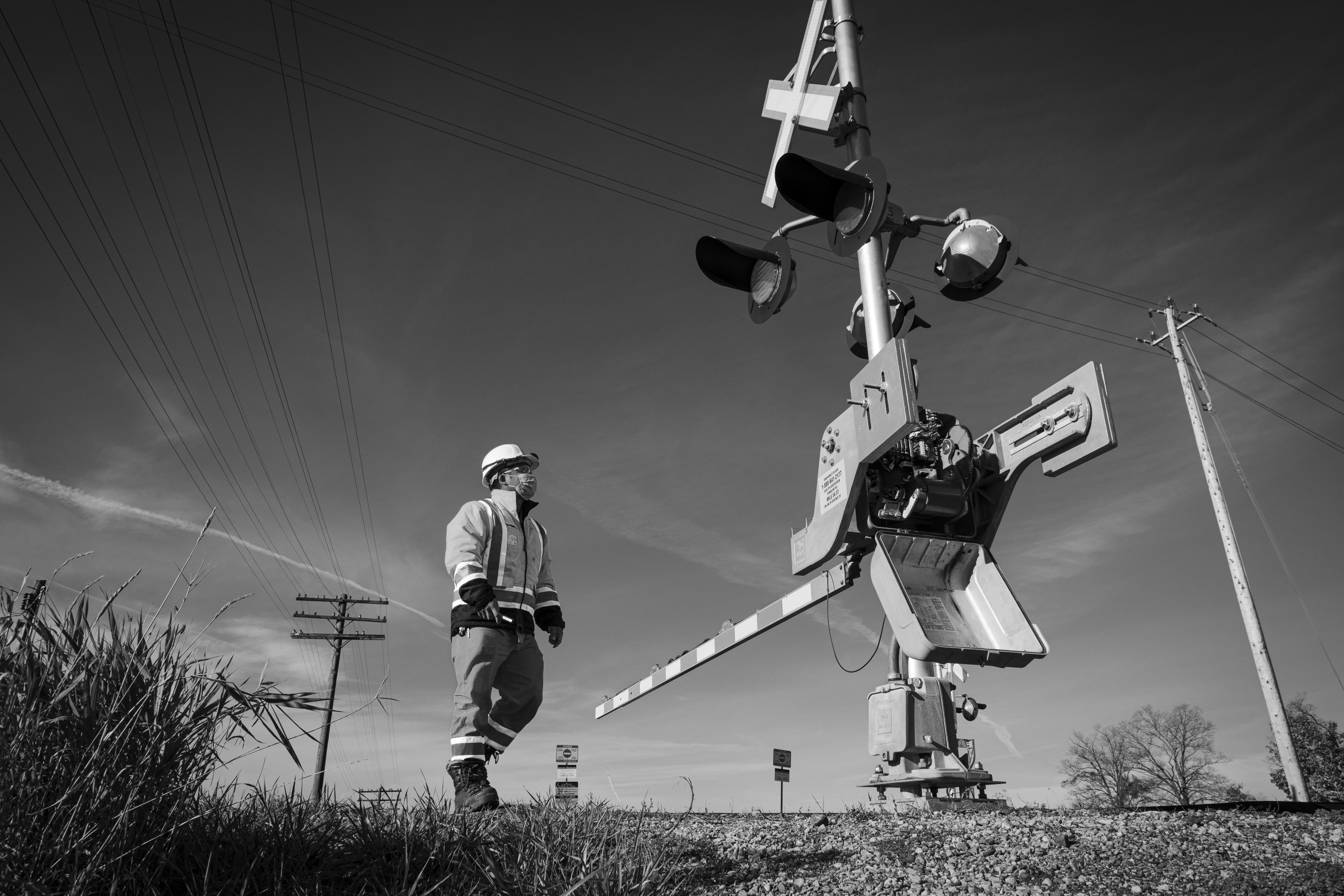Some changes riders might notice since they last got on board
Metrolinx News updates you on some transit things you may have missed while you were at home.
Mar 10, 2021
We may never be able to look at the number ‘19’ the same way again, after its association with COVID.
And don’t get us started on ‘2020’.
But using the latest statistics available, we can quickly count down some of the changes to GO Transit and UP Express since many customers last climbed aboard trains and buses.
An UP Express train waits for a signal to depart from the Pearson Airport Terminal.. (Matt Llewellyn photo)
It’s an interesting roundup of the latest figures available that may help many get up to speed on measures and differences they’ll likely notice on their return – which will come soon enough. But they’re also a reminder that while as a society – as well as a transit agency – the pandemic may have slowed our usual role, it didn’t rob our ability to adapt, revamp and enhance.
Let’s dive into the digits.
12: The months, and counting, since the full weight of COVID-19 sent many of us living with tight restrictions on movement, and limits to how many people we can hug.
3.4 million: The number of Canadians who began working from home at the start of the pandemic.
More than 2.1 million: As of the writing of this, the number of doses of approved COVID-19 vaccines administered across Canada.
Zero: The number of COVID-19 outbreaks related to GO Transit or UP Express trains, buses or stations.
Revenue Protection Officer Shawn Miller checks the PRESTO card of a Lakeshore West customer on their way to Union Station. Fare inspectors look a little different as a result of COVID-19, equipped with face coverings, goggles, rubber nitrile gloves and hand sanitizer for everyone’s safety. (Matt Llewellyn photo)
More than 50: The number of safety actions implemented by Metrolinx across its network of GO Transit and UP Express vehicles, stations and platforms. The tactics include mandatory masks worn by staff and customers, PPE and distancing, employee health checks, upgraded ventilation and sanitization, along with barriers on trains, buses and in stations. All have helped limit the spread of the virus.
More than 100,000: The litres of disinfection cleaner used throughout pandemic.
3,700-plus: Hand sanitizer dispensers installed on GO trains.
500-plus: Sanitizer dispensers installed on buses.
A Natsco Transit Solutions worker assembles part of a seat divider inside a GO train coach. In addition to seat divider, Metrolinx is also installing more than 3,700 hand sanitizer dispensers to each entry zone of our train fleet. (Matt Llewellyn photo)
10,000: Seat dividers installed on GO buses.
100: The number of enhanced cleaning points introduced on GO buses.
13: The level number used on the HEPA filters used on GO trains – the same as what you’d see in a hospital.
More than 80,000: PPE distributed to hospitals and community centres, thanks to Metrolinx staff.
Hallcon contract worker Shelly Miller cleans and disinfects a train while it’s parked at the Willowbrook Rail Maintenance Facility. While Metrolinx has always disinfected its trains and buses daily, it has stepped up its frequency to ensure all high touch surfaces are also cleaned regularly throughout their journeys. (Matt Llewellyn photo)
200: Number of migrant workers, impacted by outbreaks in the Leamington, Ont., area, who were transported to safe locations by Metrolinx volunteer staff.
26 million: The dollar figure on the worth of PPE equipment Metrolinx’s procurement team assisted the province in securing for use across Ontario.
2: The number of times Metrolinx has opened transit parking lots to truck drivers to use as rest spots as they delivered goods across the province.
28: The number of public updates on Metrolinx News about staff who may have been tested positive for COVID-19.
Chief Operating Officer, Ian Smith, speaks to Bus Controller Kevin Clarke during a September visit to the Metrolinx Network Operation Centre. Nearly 200 employees work out of this secure facility, dispatching buses, trains, station staff and transit safety officers around the region. (Matt Llewellyn photo)
122: Number of official meetings of Metrolinx’s Incident Command Team.
25: The cents saved when PRESTO did away with the service fee for overdraft on PRESTO cards, which was scrapped late last year.
1: That one fellow customer, most riders are looking forward to seeing again once everyone gets back to regular transit routines.
While this is only a short tabulation on changes along the way, over the past year, they touch on important new measures.
And as we all look to daylight on the horizon for our society, as well as transit that moves us, it only figures that the list will continue to grow.
